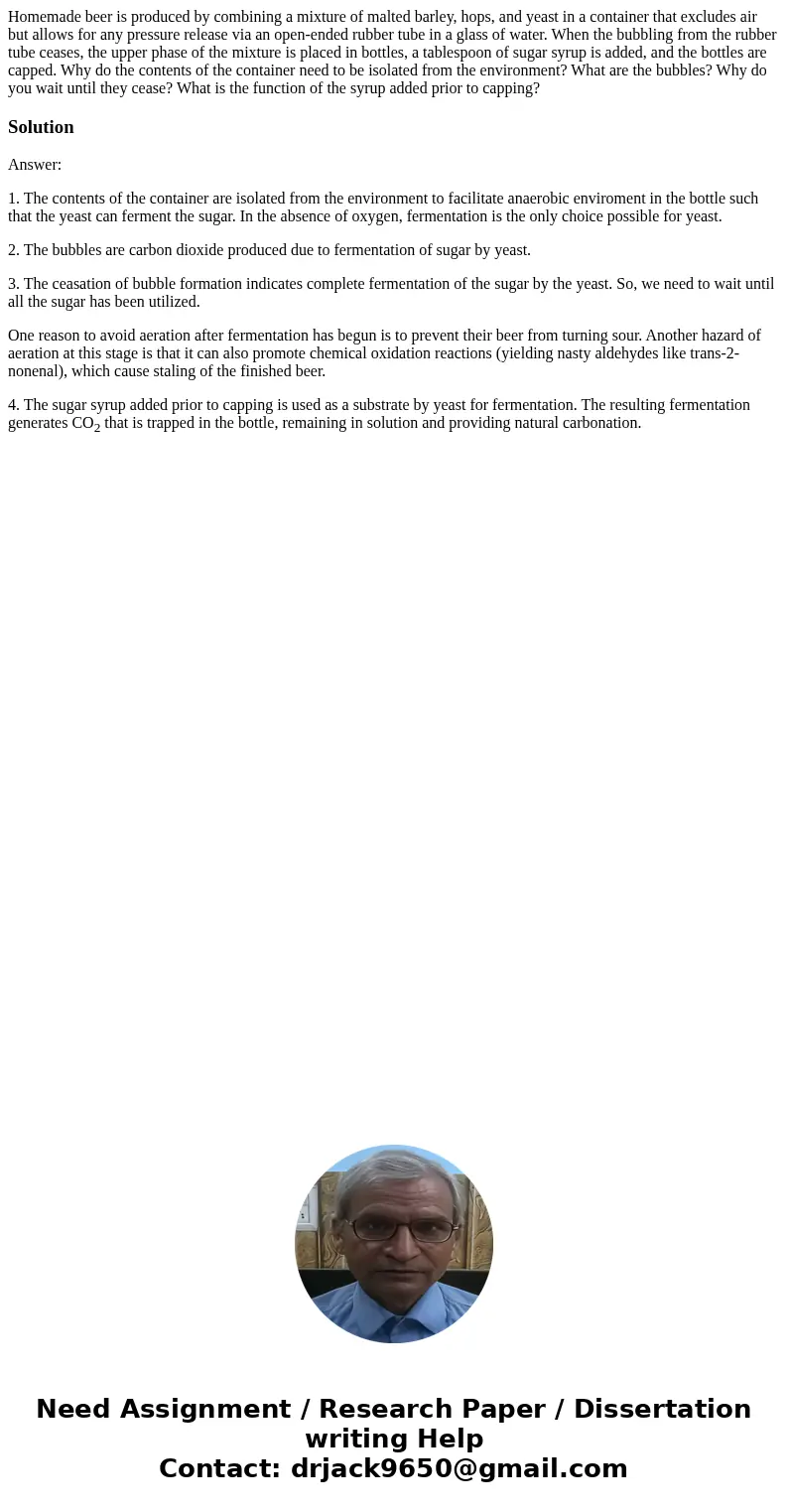Homemade beer is produced by combining a mixture of malted b
Homemade beer is produced by combining a mixture of malted barley, hops, and yeast in a container that excludes air but allows for any pressure release via an open-ended rubber tube in a glass of water. When the bubbling from the rubber tube ceases, the upper phase of the mixture is placed in bottles, a tablespoon of sugar syrup is added, and the bottles are capped. Why do the contents of the container need to be isolated from the environment? What are the bubbles? Why do you wait until they cease? What is the function of the syrup added prior to capping?
Solution
Answer:
1. The contents of the container are isolated from the environment to facilitate anaerobic enviroment in the bottle such that the yeast can ferment the sugar. In the absence of oxygen, fermentation is the only choice possible for yeast.
2. The bubbles are carbon dioxide produced due to fermentation of sugar by yeast.
3. The ceasation of bubble formation indicates complete fermentation of the sugar by the yeast. So, we need to wait until all the sugar has been utilized.
One reason to avoid aeration after fermentation has begun is to prevent their beer from turning sour. Another hazard of aeration at this stage is that it can also promote chemical oxidation reactions (yielding nasty aldehydes like trans-2-nonenal), which cause staling of the finished beer.
4. The sugar syrup added prior to capping is used as a substrate by yeast for fermentation. The resulting fermentation generates CO2 that is trapped in the bottle, remaining in solution and providing natural carbonation.

 Homework Sourse
Homework Sourse